Have you ever transcribed an audio recording with Klangio, only to find mistakes and errors in the transcription? We’ve all been there. Transcription is tricky business, and even the most advanced AI-powered transcription services can make mistakes. The good news is that Klangio offers several easy ways to fix transcription errors for inaccurate transcriptions. In this post, we’ll explore 5 simple steps you can take to improve the accuracy of your musical transcriptions to fix bad music transcriptions using Klangio’s powerful transcription editor.
Continue reading or watch the YouTube Tutorial:
Option 1: Double Check the Original Recording
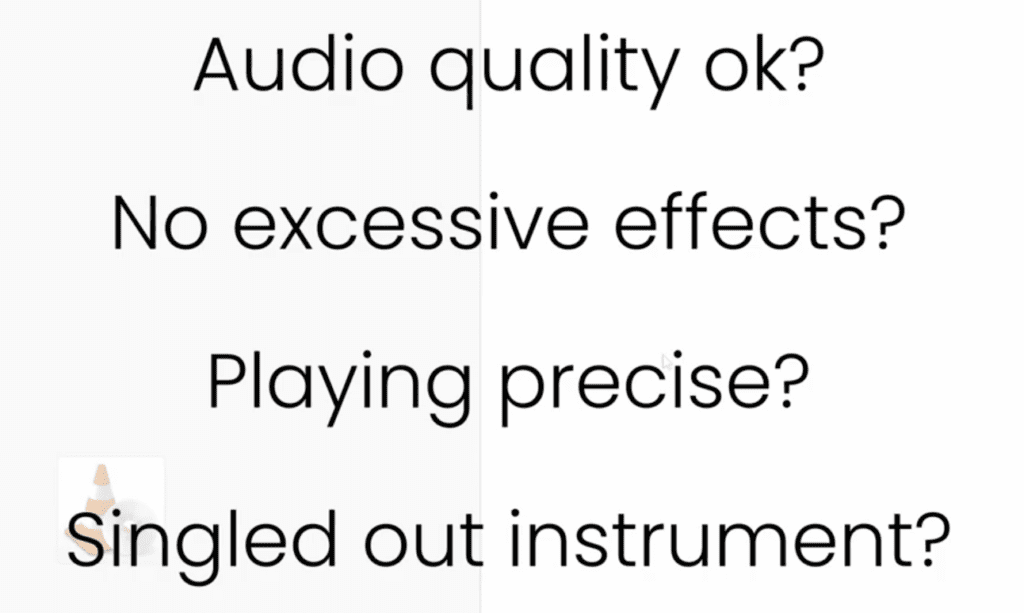
Before diving into editing the inaccurate transcription, it’s important to verify the quality of the original recording. Ask yourself the following questions:
- Is the recording quality high enough? Excessive background noise or distortion can throw off the transcription software.
- Is the recording dry? Effects like Reverb, Delay and Distortion can greatly affect the transcription quality
- Is the playing precise and clear? Sloppy playing makes transcription much harder.
- Is it an isolated recording of a single instrument? Songs with multiple instruments or vocals are harder to transcribe accurately.
If the answer is “no” to any of these questions, it might be easier to re-record the piece instead of trying to fix a bad transcription. Investing time into getting a clean initial recording pays dividends on the back end.
Option 2: Retranscribe the Piece
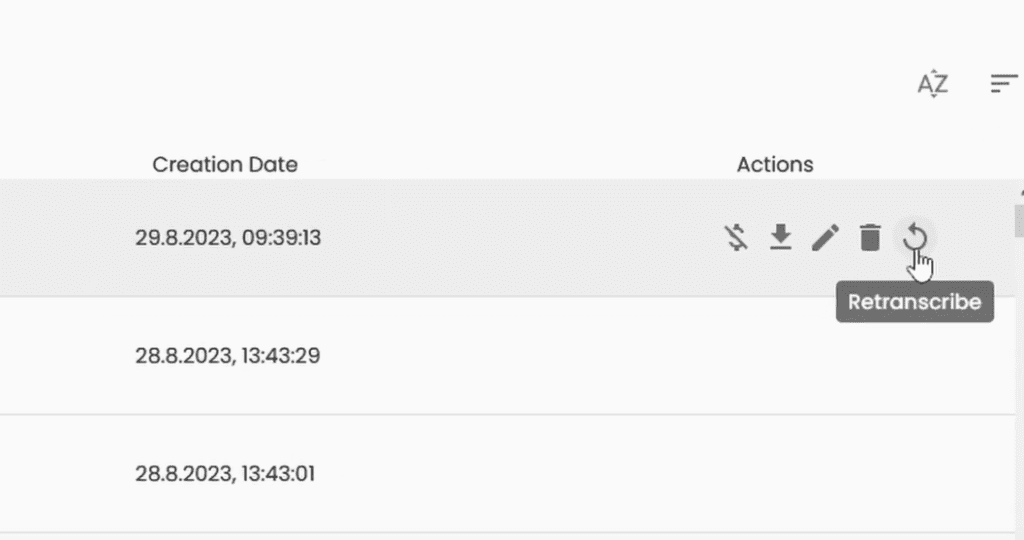
Once you have a good quality recording, the easiest way to fix errors is to re-transcribe the piece. Klangio makes retranscription simple. Just go to your Songbook, find the song, and click “Retranscribe” in the action menu.
Here you can tweak the key, time signature, mode, and other parameters to match your recording more closely. Klangio will analyze the audio again using the new settings. Often this alone can significantly improve accuracy.
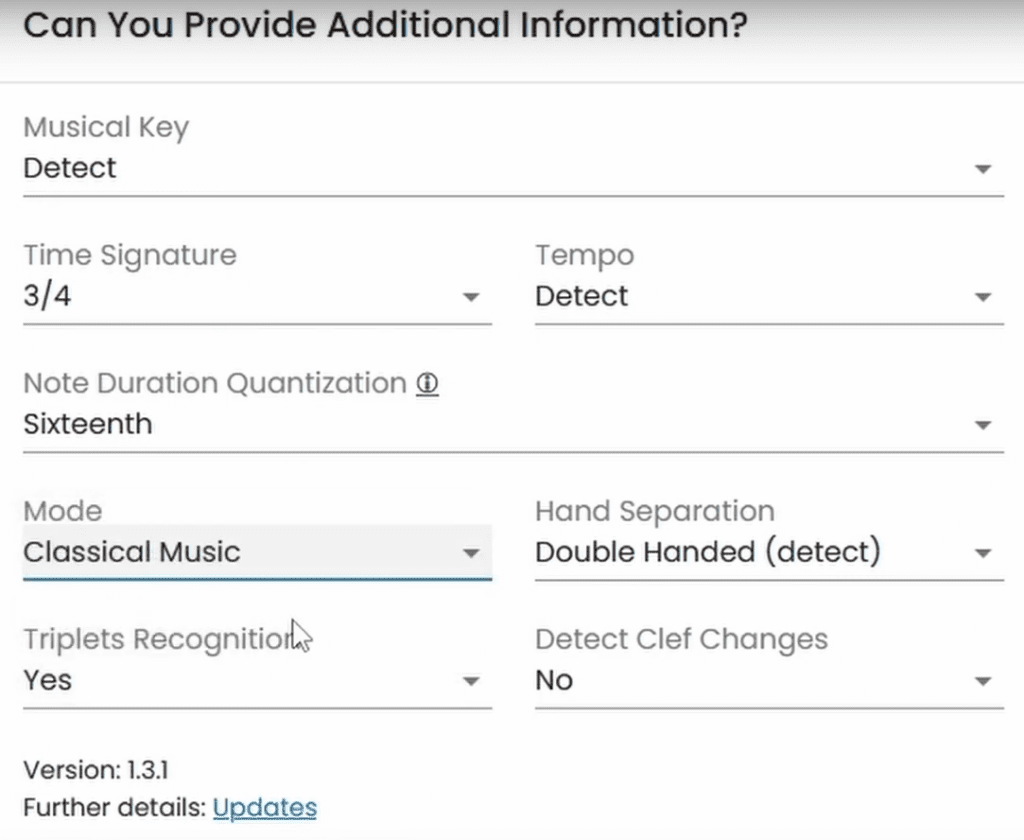
Feel free to retranscribe multiple times with different settings until you achieve optimal results. Easy!
Option 3: Use Klangio’s Edit Mode
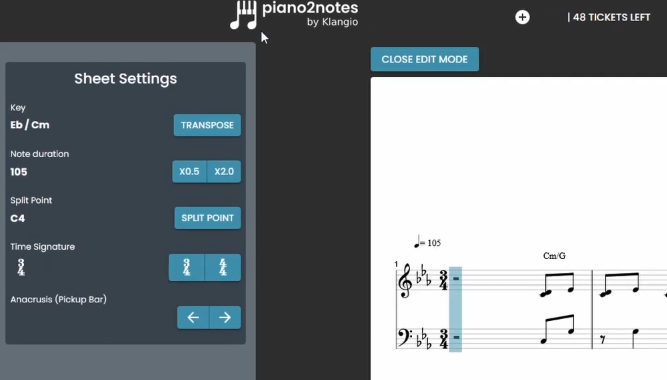
If retranscribing doesn’t quite nail it, use Klangio’s powerful Edit Mode. Click the “Edit Mode” button in the top left corner of the transcription screen.
Now you can directly edit the sheet music notation without re-transcribing the entire piece. Easily change time signatures, adjust note rhythms, transpose keys, and more.
For example, if the first downbeat is wrong, use the pickup tool to shift notes earlier or later in time. Or swap that troublesome Bb for a B natural. The possibilities are endless.
Don’t forget to hit “Save” when you are finished editing!
Option 4: Request Missing Edit Mode Features
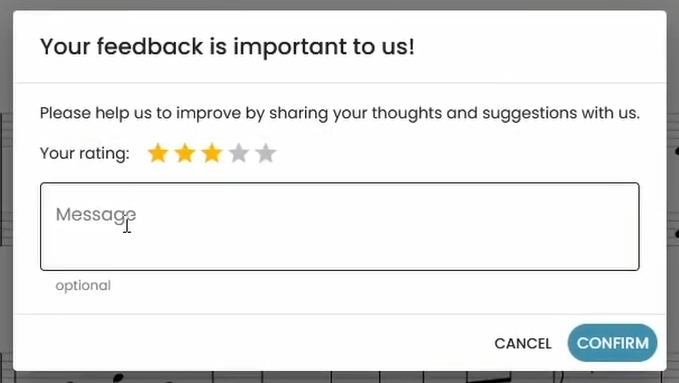
If you find yourself needing a particular editing tool that Klangio doesn’t yet offer, make a feature request!
Rate your transcription in the editor, leave a comment detailing the issues you faced, and suggest new editing capabilities that would help resolve those problems. The Klangio team heavily factors user feedback into deciding which features to add next. Fixing your bad music transcription might be just one message away.
You can also join the Klangio Discord to discuss transcription editing needs with fellow musicians and the developers.
Option 5: Download and Edit the MIDI or MusicXML File

For maximum editing flexibility, download your transcription as a MIDI or MusicXML file. Then open it in your favorite notation software like MuseScore or Finale to edit every musical detail.
See our transcription file formats guide for more info on working with downloaded transcriptions.
The extensive editing capabilities in these desktop programs allow fixing even the most botched transcriptions. Just be prepared for more tedious and time-consuming editing compared to Klangio’s web-based editor.
Conclusion: Easily Fix Transcription Errors Using Klangio
Transcribing music is challenging, but fixing transcription mistakes doesn’t have to be difficult. With Klangio’s online transcription tools, you have multiple fast and easy methods to improve accuracy:
- Retranscribe with optimized settings
- Use Edit Mode to change notation directly
- Request new editing features
- Download and edit the MIDI/MusicXML file
Following these simple tips, you can turn even the most error-prone transcription into an accurate, polished score. What transcription challenges have you faced? Let us know in the comments below!

